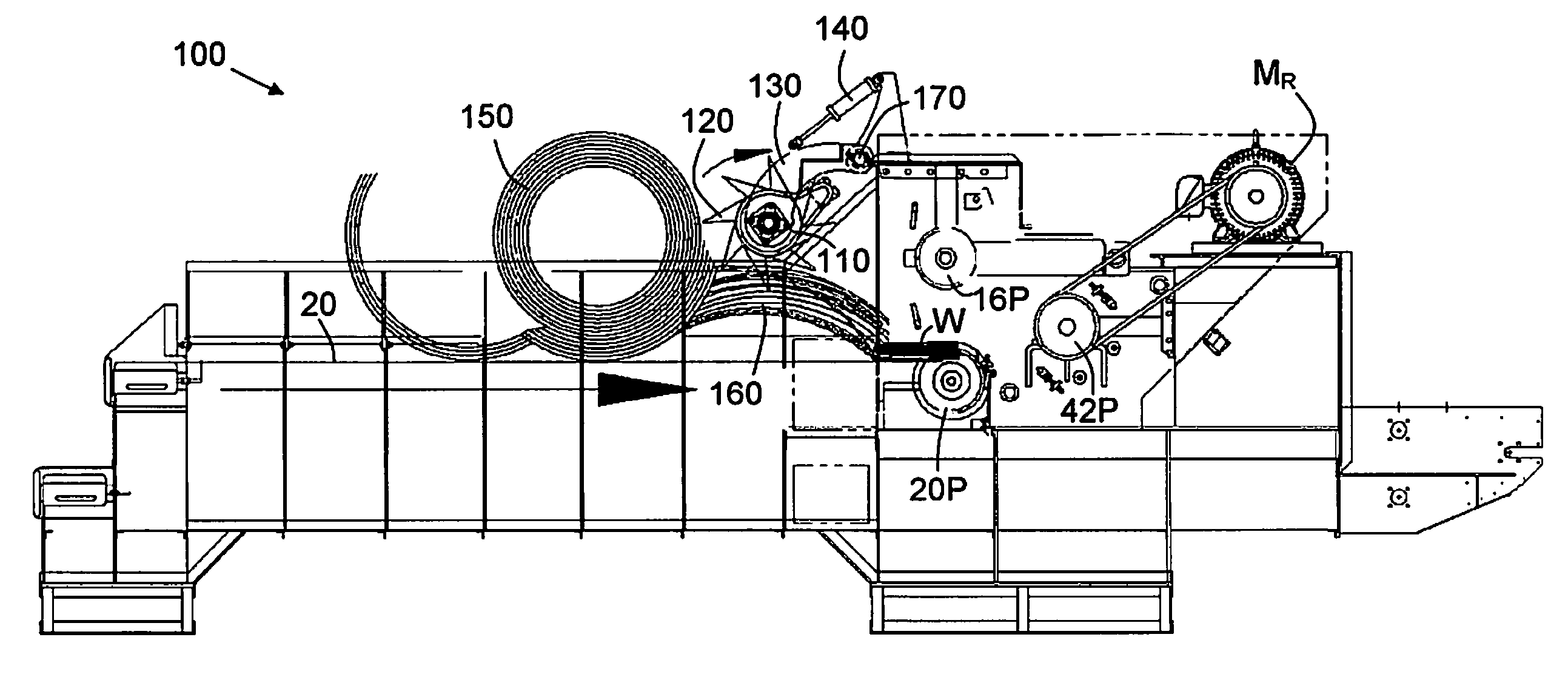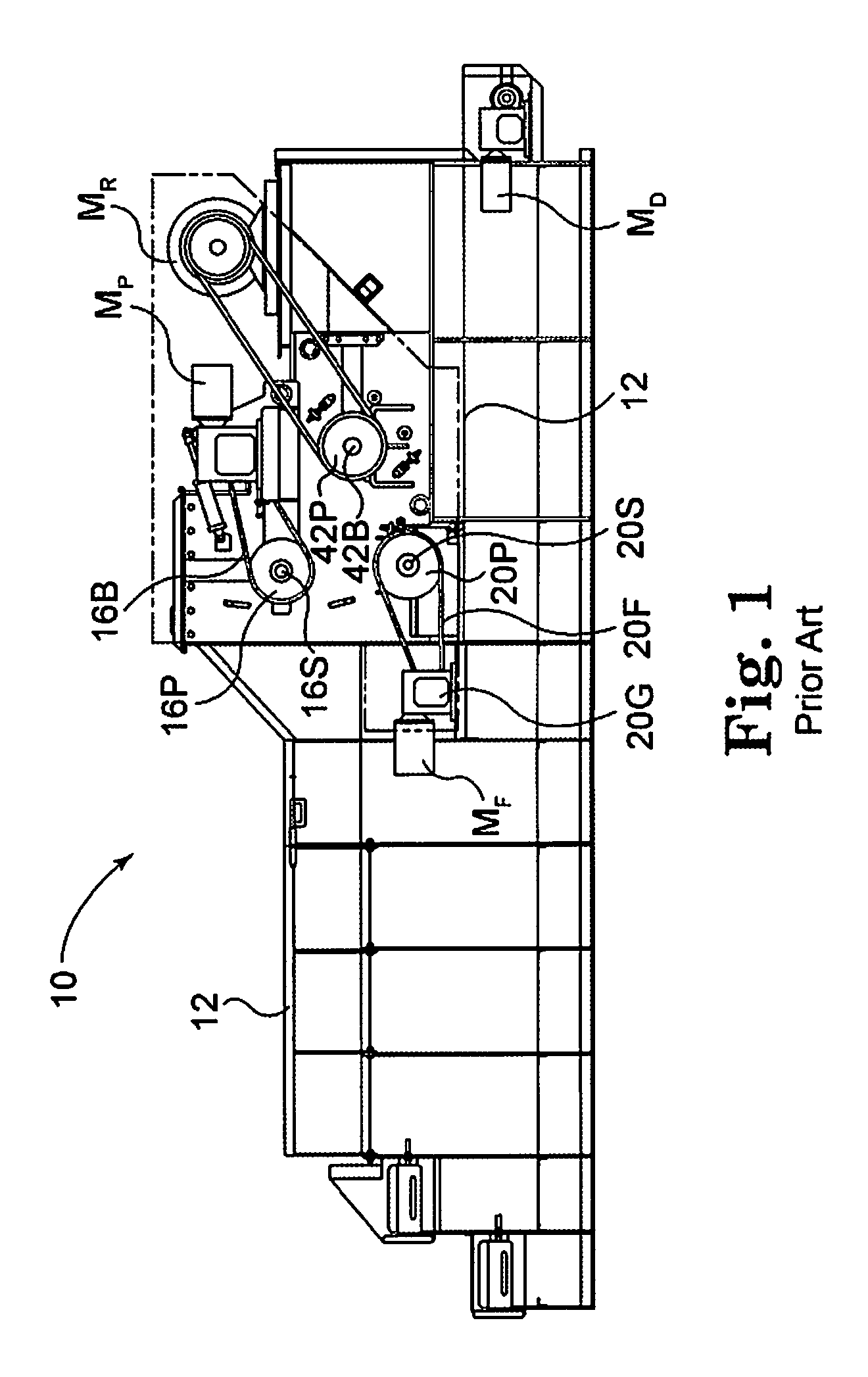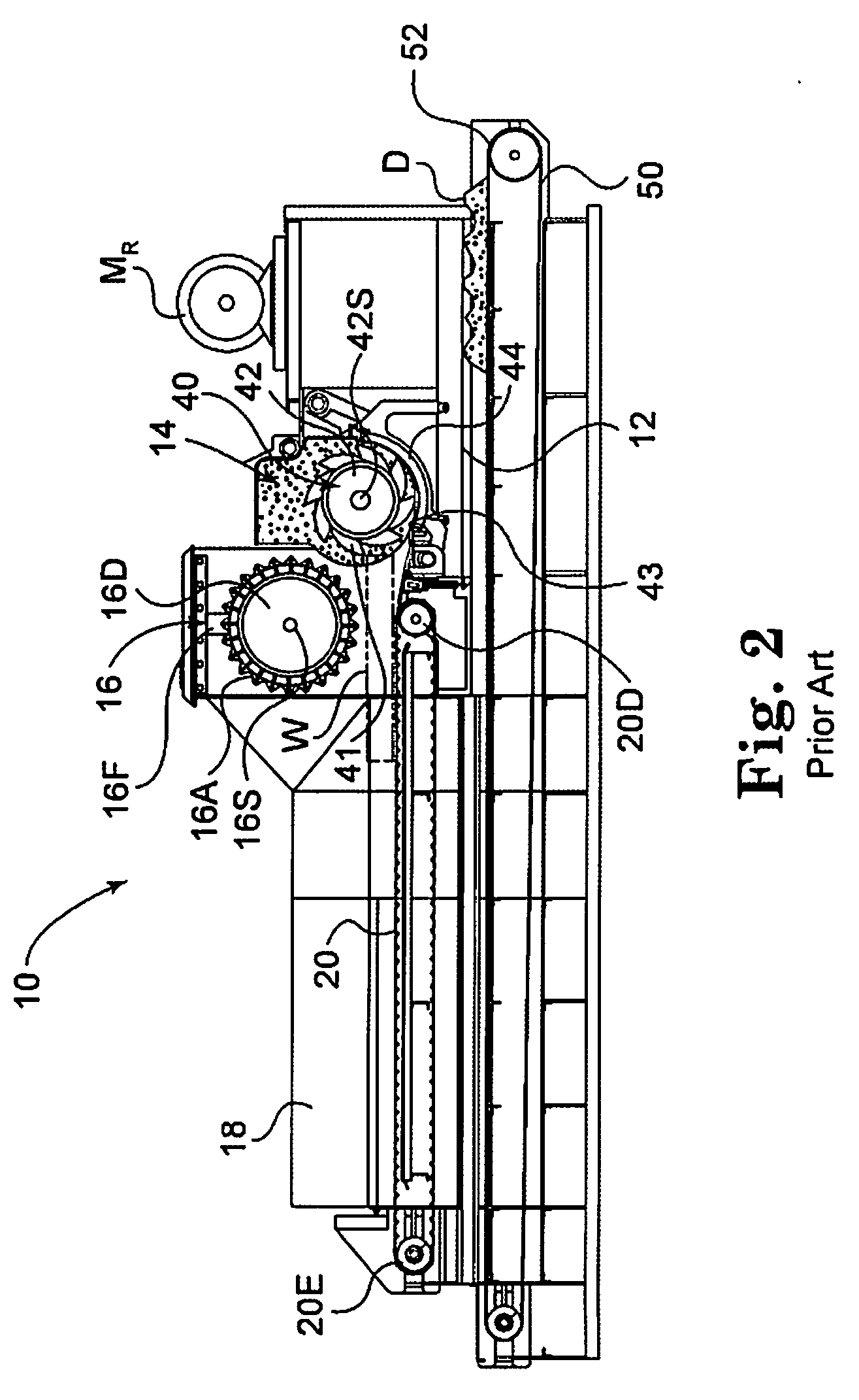Bale breaker apparatus and method
a bale breaker and bale breaker technology, applied in the field of bale breaker apparatus and method, can solve the problems of weaker livestock becoming undernourished, affecting the quality of bale breaker, and rarely using bale breaker products in baled form
- Summary
- Abstract
- Description
- Claims
- Application Information
AI Technical Summary
Benefits of technology
Problems solved by technology
Method used
Image
Examples
Embodiment Construction
[0035]An auxiliary powerfeed is designed to assist a horizontal grinder to process materials that are bound, packaged, or otherwise joined together into solid form, including round and square agricultural bales, baled recyclables (such as plastic bottles), and gaylord boxes. Other feedstocks for which it may provide advantages include cabinets, crates, and other objects constructed by nailing or otherwise joining individual members of wood, plastic, or other light materials. The purpose of the auxiliary powerfeed is to separate these materials before they reach the standard powerfeed, thereby increasing the efficiency and efficacy of the standard powerfeed and the grinder as a whole.
[0036]An auxiliary powerfeed is disclosed, which is designed to work in conjunction with other feeding devices found on a horizontal grinder, which typically include a horizontal feed conveyor and a powerfeed drum. The auxiliary powerfeed features a rotating drum on which are mounted rigid tines (or teet...
PUM
 Login to View More
Login to View More Abstract
Description
Claims
Application Information
 Login to View More
Login to View More - R&D
- Intellectual Property
- Life Sciences
- Materials
- Tech Scout
- Unparalleled Data Quality
- Higher Quality Content
- 60% Fewer Hallucinations
Browse by: Latest US Patents, China's latest patents, Technical Efficacy Thesaurus, Application Domain, Technology Topic, Popular Technical Reports.
© 2025 PatSnap. All rights reserved.Legal|Privacy policy|Modern Slavery Act Transparency Statement|Sitemap|About US| Contact US: help@patsnap.com



